Hurricane Katrina, 10 Years Later
The Photos That Moved Them Most
On Aug. 29, 2005, the Category 3 Hurricane Katrina made landfall in Louisiana with winds of up to 125 mph, causing an unprecedented storm surge and catastrophic floods in communities around Lake Pontchartrain in New Orleans. At least 1,800 people were killed and 400,000 forced to leave their homes—permanently for some. With damages of more than $100 billion, this “man-made catastrophe,” as President Barack Obama labelled it in 2010, profoundly changed Lousiana’s social fabric. It also changed the many photographers who covered Hurricane Katrina’s aftermath. TIME LightBox asked 14 of them—Stanley Greene, Alan Chin, Kadir van Lohuizen, Christopher Anderson, Mario Tama, Larry Towell, Michael Appleton, Daymon Gardner, Barbara Davidson, Christopher Morris, Jake Price, Ron Haviv, Thomas Dworzak and Joachim Ladefoged—to select the photographs that moved them most.
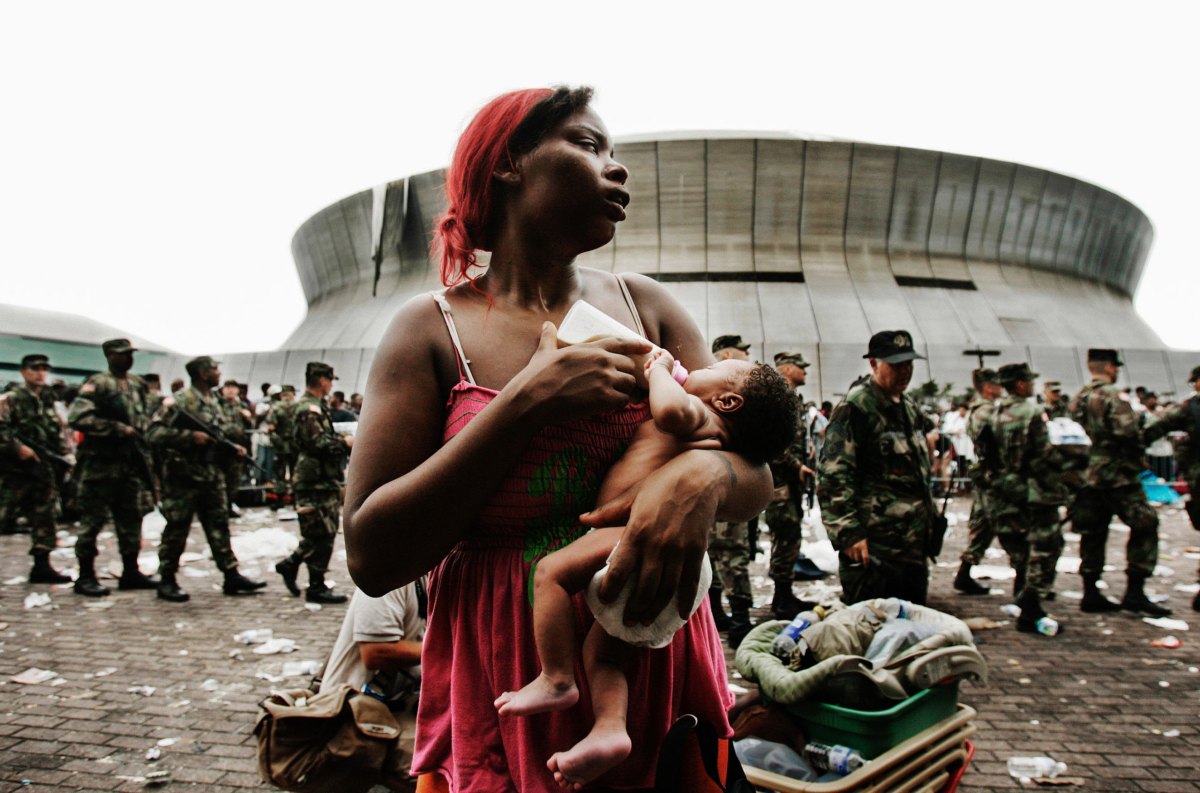
The Superdome was the epicenter of the calamity that was the aftermath of Hurricane Katrina. With no power or running water, it was a dark and rancid place to be. Many chose to gather outside the ravaged stadium rather than endure the smell and spookiness inside. It was a depressing scene, made all the more depressing by the fact that it didn’t have to be that way. Instead of sending buses to remove people from the city the day after the storm, the government sent in the National Guard and unneeded SWAT teams from around the country. People like Quintella Williams and her then nine-day-old baby girl, Akea, shown here, and tens of thousands of others, were essentially left to fend for themselves for days because of the failure of the government to properly respond to the disaster. —Michael Appleton, a World Press Photo winner and photojournalist based in New York City.

Milvertha Hendricks, wrapped in an American flag blanket, was 84 years old when she spent almost a week on the sidewalk in New Orleans, along with thousands of other people huddled near the Convention Center in the scorching heat after Hurricane Katrina. Police officers killed a man trying to flag them down for help virtually in front of her, and there was little food or water until the day before she was finally evacuated on September 4, 2005. She looked weak and exhausted when I saw her the morning before, so I took only two photographs, because I did not want to be any more intrusive than necessary.
Her ordeal brought home to me how terribly the disaster response had failed, because it is hard to imagine any scenario in which the safety of the most vulnerable – the very old, the very young, and the ill – would not be paramount. I had flown to Baton Rouge and rented a car and driven into New Orleans having no more problems doing so than I would have at any other time. If it had been that easy for me, a civilian photojournalist, why had it been so impossible for the combined search and rescue efforts of the government and the military to bring succor to Ms. Hendricks and all of the other people most at risk? As we know, many died needlessly at the hospitals, at St. Rita’s nursing home, and everywhere else.
When I look at my photograph here, I think about my own mother and grandmother, who survived civil war, Japanese invasion, and revolution when they were young women in China. They emigrated to the U.S. in search of a better life like so many immigrants, and succeeded in small measure, at least, to live long lives in peace; secure in the knowledge that they had become citizens in a country that would protect them if the worst ever happened. Ms. Hendricks was denied this fundamental part of the American dream as an elderly lady.
A year later, Eric Gay of the Associated Press, who had also photographed her several days before I did, when she was in better shape, located her living with her son in Houston, Texas. She declined to be re-photographed or to grant any interviews other than to say that she had no recollection of the time she had spent in those awful conditions. I hope that I documented her plight with dignity and compassion, and that she was able to recover a normal life. —Alan Chin, a freelance photographer based in New York City.

I came across these items while walking the streets of New Orleans’ Lower Ninth Ward two years after Hurricane Katrina. I was in the neighborhood documenting the destruction that remained years after the storm. There was plenty to photograph, but this image has always stuck with me. I remember receiving trophies from playing sports as a kid. They spent most their lives above the laundry room cabinets in my parents’ house, now boxed away in an attic. They’re cheap objects, but the sight of them brings a sense of childhood and achievement to mind. The trophies in this photo were scattered among photo albums, clothing, and other personal items abandoned on the streets of the Lower Ninth. I remember leaving the neighborhood that day in disbelief that so much destruction remained, but when I see this photo, all I can think about is someone’s childhood. —Daymon Gardner, a photographer based in New Orleans, La.
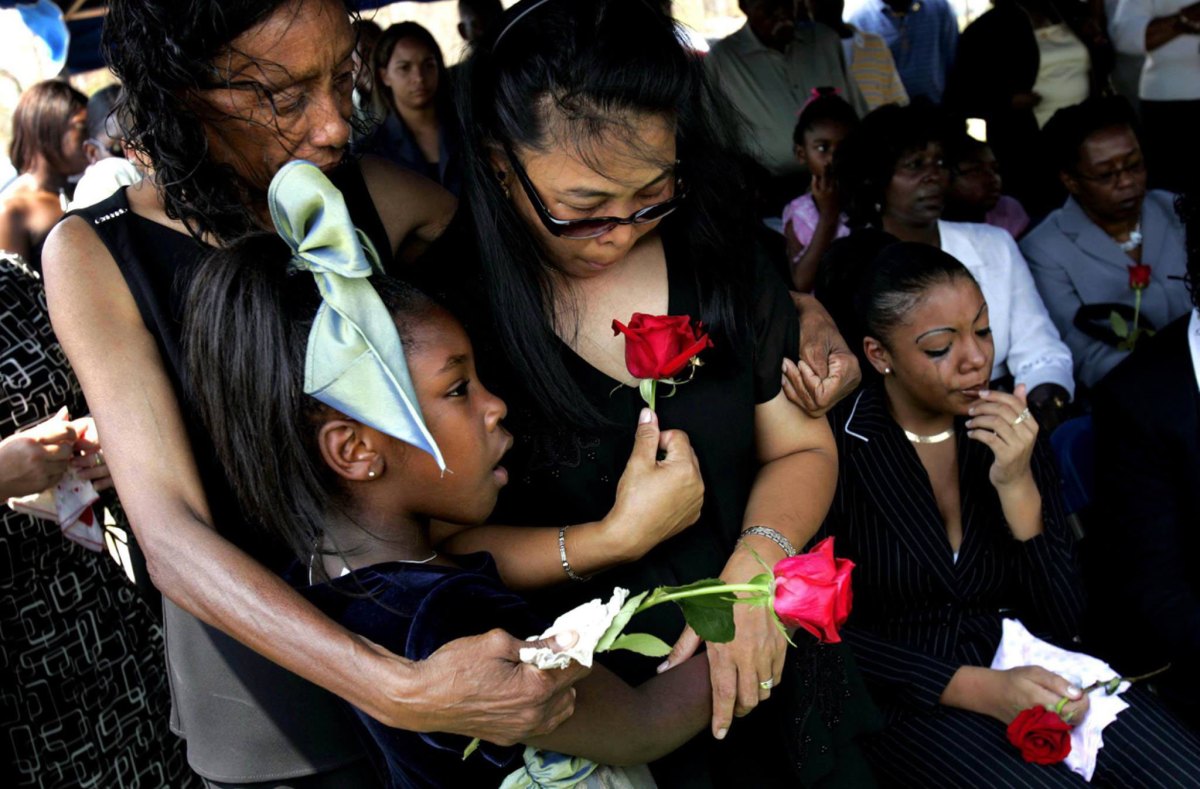
Even though a decade has passed since I met Genoveva Tart, I can still see her in my mind stoically telling reporter Karen Brooks and me about the moment she found her two-year-old son Mattie lying, “like a doll,” dead on top of her kitchen cabinets, and her husband Sam dead on the kitchen floor. Neither had survived a thirty-foot surge that washed over their home when Hurricane Katrina pummeled the Mississippi Gulf Coast on her only child’s second birthday. She called him her “miracle child” because she’d given birth at the age of 43. On her way to her job that day at a senior’s home, Genoveva had begged her husband to leave the house. But Sam thought they’d be safer staying and besides, if they were going to die, he’d rather die at home.
Genoveva waited out the storm at work looking after the residents. After two days with no word she decided to run the five miles from work to home. She pushed her way through living room debris and climbed up onto the kitchen counter to reach the cabinets where she found Mattie, “still soft,” lying dead where his father had put him in an effort to save him from the rapidly rising waters. Hysterical with grief, she took her baby in her arms and ran out of the house, past destruction she no longer saw, screaming for help. While her husband’s body lay dead on the floor inside the house, she waited outside for hours cradling their dead child in her arms until coroners arrived. I often wonder how it is that the human spirit can survive and go on after such mind numbing tragedy. –Barbara Davidson, a Pulitzer Prize winner and staff photographer for the Los Angeles Times.

I was driving around by myself. It’s really hard to describe the vast areas of complete abandonment, for the government had made it a mandatory evacuation area. You could drive for hours and see no one. Just wild abandoned dogs. To come across this scene was actually quite frightening, for it was straight out of a horror movie. I really don’t know the exact details, but it looked like to me that the woman was left outside during the evacuation and had passed away, with no one to return to pick her up. She was there for weeks. —Christopher Morris, a VII Photo member and photographer based in Tampa, Fla. and Paris, France.

This photo was taken on the third anniversary of Hurricane Katrina in a house that had been left abandoned after the storm. I was walking with a marching band who was paying tribute to the victims of the storm when I noticed the hanging coat from the street below—the wall of the two story house had been sheered off, offering a glimpse into the once private room. As the music from the street receded, I found myself in silence in the darkened house. I was astonished to find it much as it must have been three years prior when its residents hastily fled. In the living room on the couches were children’s toys, family albums eaten away by black mold, a child’s unfinished homework left soggy by years of humidity. Nearby, on the dining room table, was a tea set. I imagined the family had just finished having guests over and never got the chance to put the china away.
Since I took the photo, I’ve thought a lot about the hanging leisure suit and the man who once wore it—did he survive the storm or end up living in a far away city? The only sure thing is that he would never live there again or wear the clothes that gave his life meaning. The suit has become a ghost in my imagination, one that haunts the house hanging onto the life that used to be sheltered within and protected from the elements outside.
Over the past decade, from New Orleans to tsunami battered Japan, I have come across more homes like this than I can remember. They are like modern day versions of Pompeii, living snapshots of receding civilization due to climate change. Each home has the same characteristic in that the things that made up the inhabitant’s lives were left just as they were, signifying the moment when their home lives suddenly ceased to exist and their exodus from their communities began. —Jake Price, a photographer based in New York City.
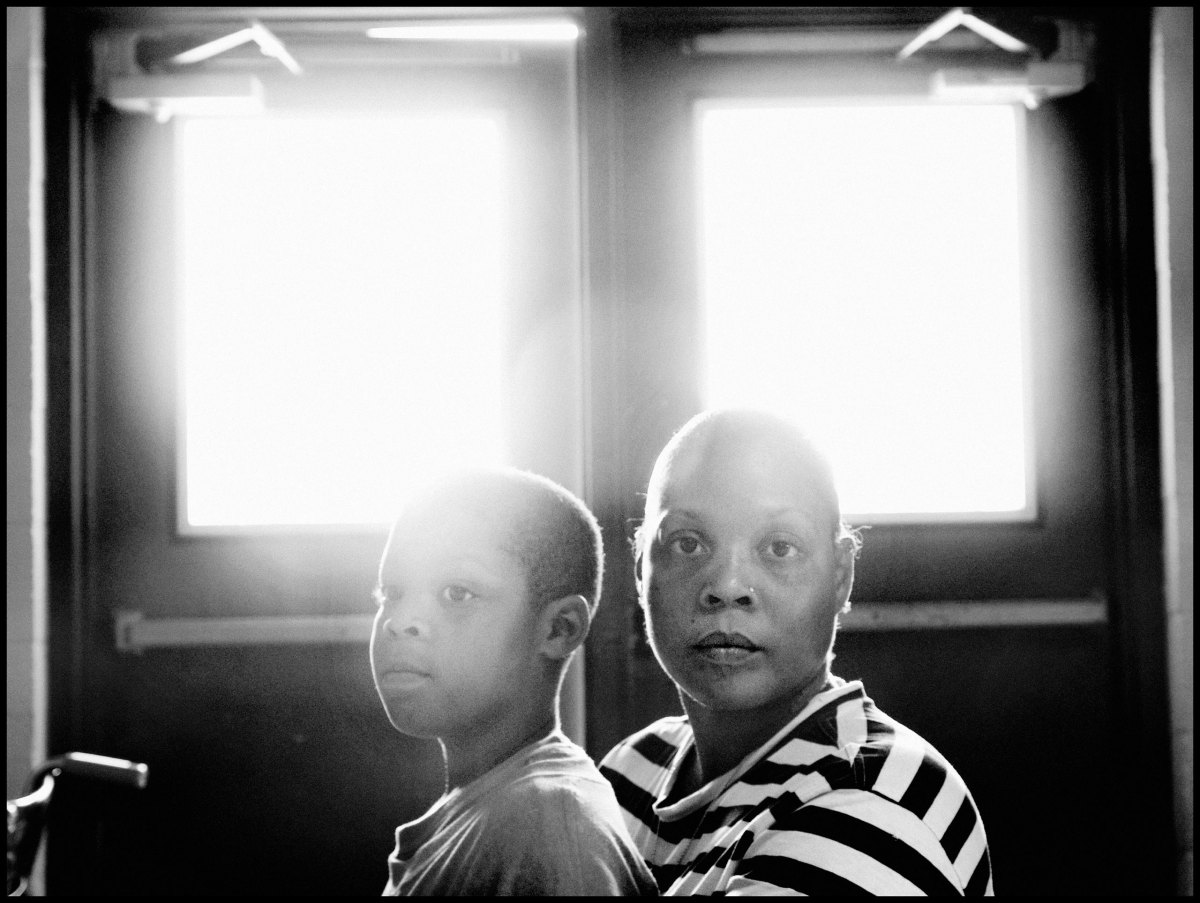
I photographed this mother and son in a shelter near New Orleans. I think I was struck less by the physical destruction of the place than by the collective fear and insecurity. So many people who were already living at the edges were now pushed beyond. Something in the eyes of this mother and child spoke to me of that fear and uncertainty. —Christopher Anderson, a Magnum Photos member and a photographer based in New York City.
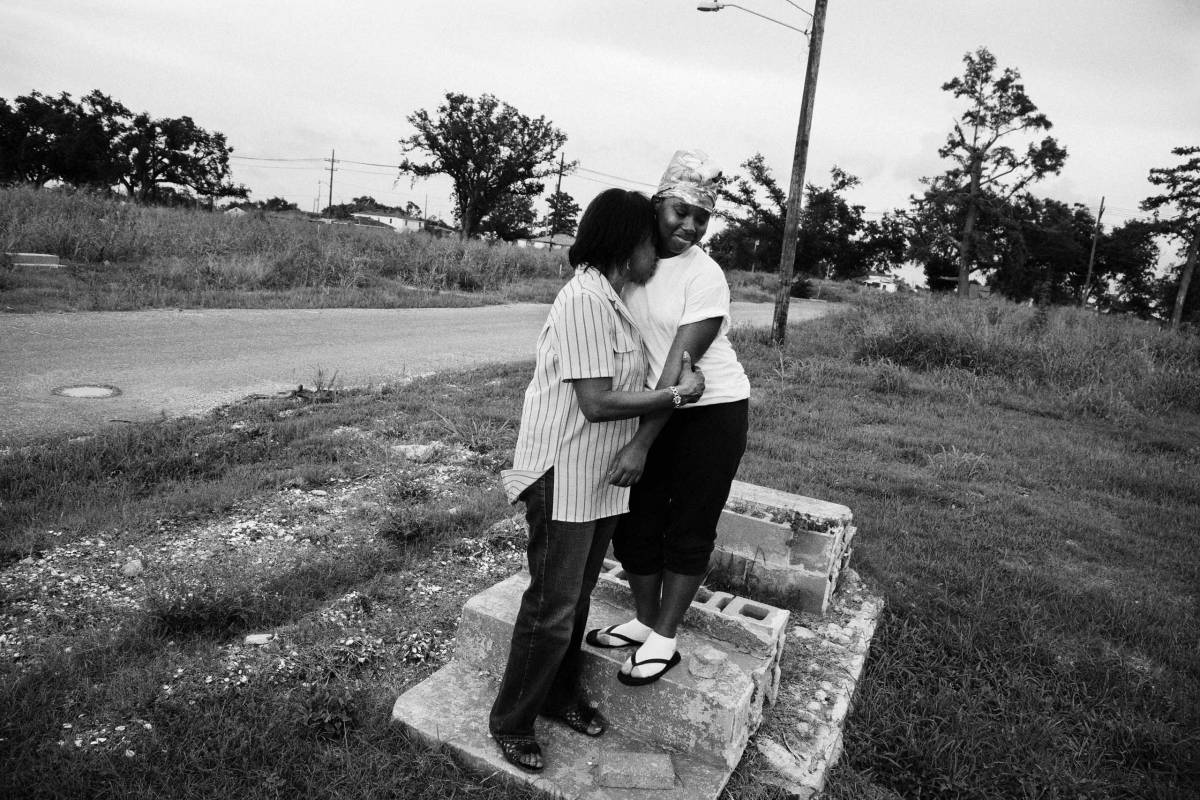
After Hurricane Katrina, I started to realize that many people were not coming back to New Orleans. Most people thought they would come back, but the majority never did. I thought it was quite shocking. In some cases, the real-estate prices had gone up so sharply that a lot of people couldn’t afford to come back. I followed Talitha Halley’s family for four years. They never came back. But Talitha managed to find her own way – she’s managed to climb out of the gutter. Donna Wotkyns, director of development for Communities In Schools of Houston says of Talitha that “she’s just about the most determined young lady that I have ever met. She’s resilient. You would think she would be so bitter coming from where she’s been. But she’s a perfect example of someone who takes lemons and makes lemonade.” Talitha graduated from university this year. She represents the American Dream, where the lucky few can find a way out. –Kadir van Lohuizen, a NOOR member and photographer based in Amsterdam, The Netherlands.
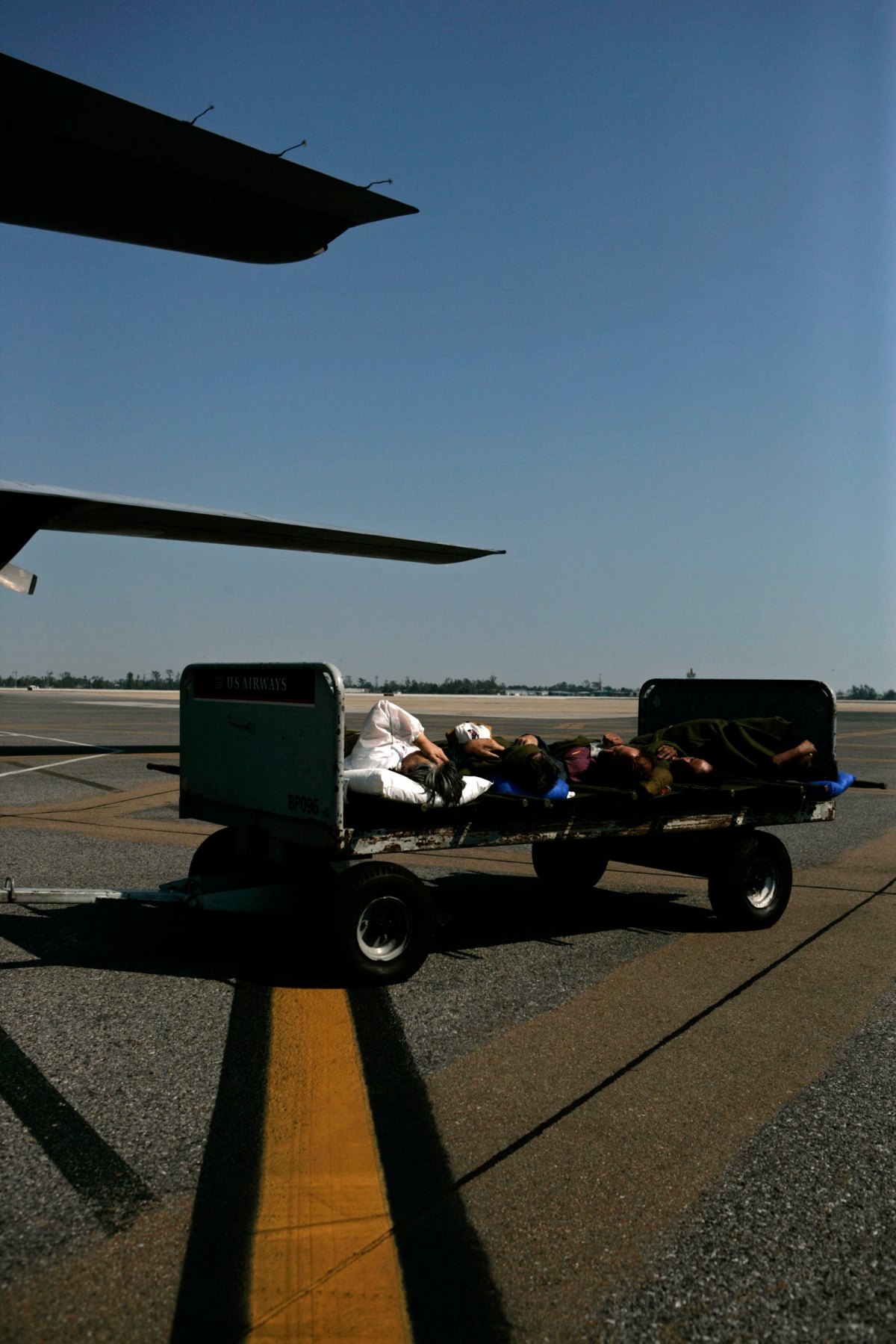
One of the most striking things about the aftermath of Hurricane Katrina was the realization that those struggling to survive had been abandoned by the government. People understood that the only way to subsist in the immediate was to care for themselves. Almost all was breaking down, a shocking crumbling of infrastructure, and I bore witness to sidewalk graves, abandoned victims outside their homes and water for days on end. Sick people trying to leave took the place of luggage on carts on an airport runway. It is thought that a civilization can be judged on how it treats its ill and dead. The days following Katrina should haunt us all about how we lost our way. —Ron Haviv, a VII Photo member and photographer based in New York City.
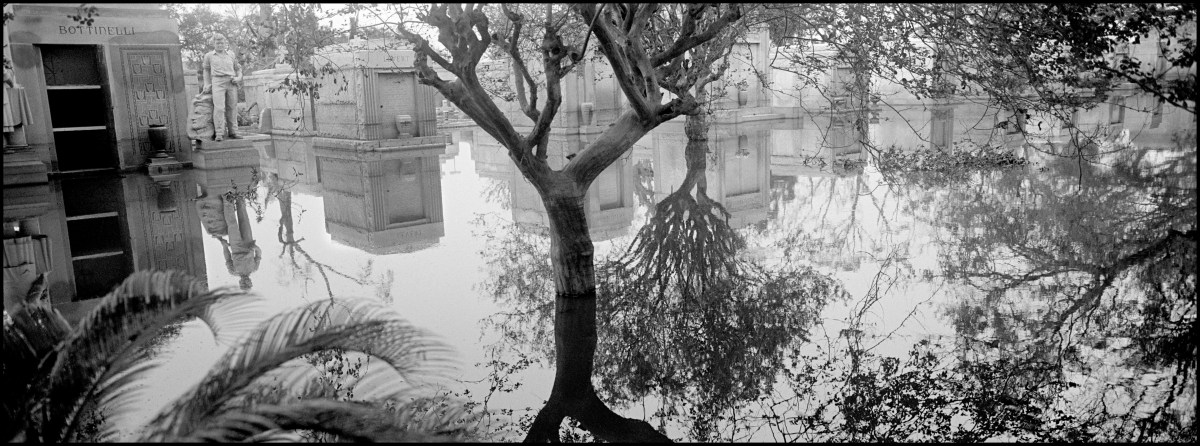
In Katrina’s immediate aftermath I spent a week driving the Gulf Coast with novelist Ace Atkins. Since the media was over-obsessed with New Orleans, we decided to focus on the Mississippi coast where the storm’s wrecking ball hit heaviest. We found whole towns completely wiped off the map with a few remaining houses lifted up and dropped on railroad tracks. Roads and rail lines were bent, broken and curled. Transport trucks had been lifted into the air and set on cement block walls while roof tops sat at street level. The entire contents of a Wal-Mart covered several football fields. (The store itself appeared to be gone.) In Waveland, only a fire hydrant held its ground where there had once been an entire subdivision of homes. The only thing left of its Catholic Church, apart from the floor and a bit of debris, was a concrete statue of the Virgin Mary. Shell-shocked people we met on the road blamed themselves for the death of family members they’d convinced to stay behind and weather the storm.
On our last night we passed through New Orleans. Because the city is below sea level, bodies in graveyards are placed in mausoleums because water would force coffins to pop out of the ground. It was dusk at the Metaire Cemetery when I got out of the car and walked knee deep through the water to shoot the last image. —Larry Towell, a Magnum Photos member and photographer based in Ontario, Canada.
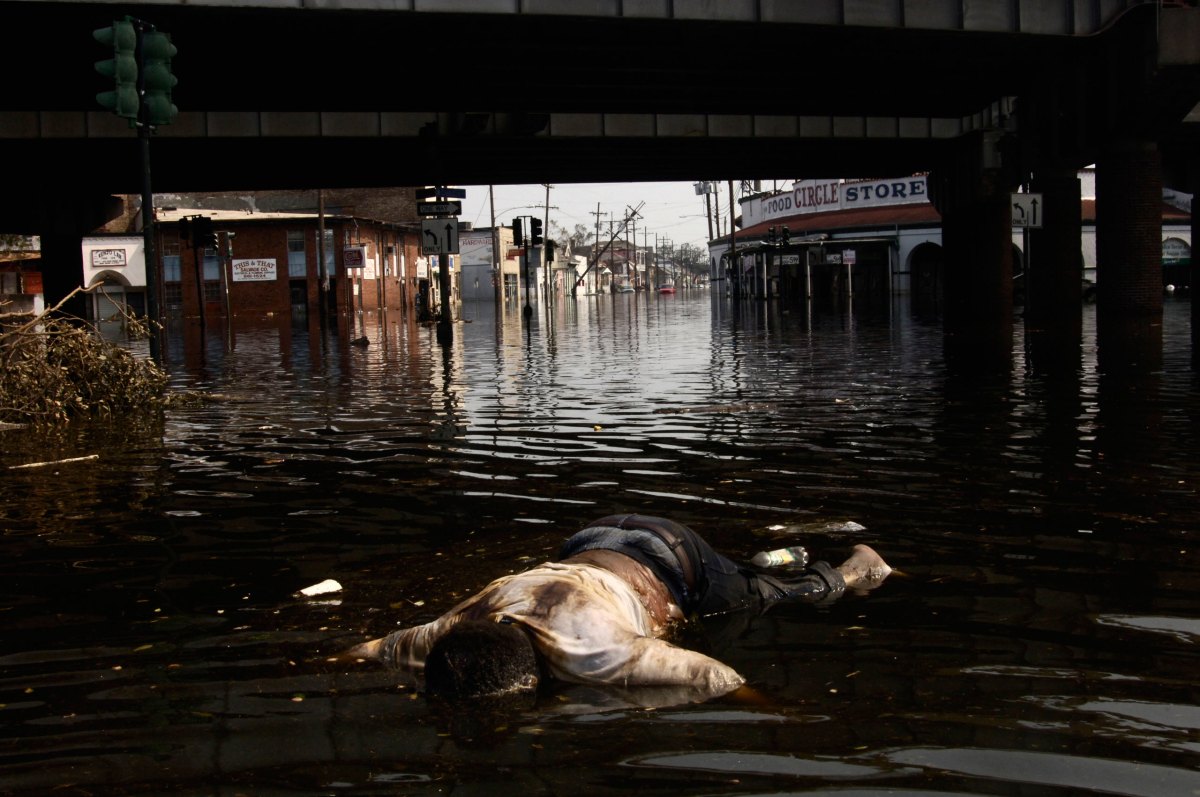
Dead people lying around, or floating in water for days, or being pushed down turnpikes in wheel chairs by their relatives, in the middle of the U.S. was probably the most extreme element of the whole post Katrina chaos. —Thomas Dworzak, a Magnum Photos member and photographer based in Paris, France.

In a time when photojournalists were mentally preparing for U.S.-led wars overseas (Iraq and Afghanistan), none of us conceived that we would cover our own government’s failure to protect U.S. citizens on American soil. Iraq-style scenarios simply didn’t happen back home. I had taken a quick flight from New York and assumed I might be covering some wrecked houses and downed power lines along the coastline, and probably would be back in New York in a few days. Little did I know that I would soon be witnessing what amounted to something akin to a failed state.
The storm passed and folks, including myself, believed New Orleans had dodged a bullet. Unfortunately, the levees were beginning to fail. The situation rapidly degenerated and by August 31, when this photo was taken, New Orleans was experiencing a borderline societal breakdown, with nearly 80 percent of the city under water. I drove to the Lower Ninth Ward, one of the hardest hit areas, and was able to jump onto a small boat being steered by local residents who were valiantly attempting to rescue or assist those still stranded three days after the storm struck.
As we were riding over the floodwaters, our boat became stuck on something, nearly tipping over. And as we looked down, it turned out we were stuck on the top of someone’s roof. It was at that moment that the immensity of the disaster became brutally apparent.
The men who I photographed in the canoe are paddling with some pieces of found lumber. They paddled towards us after I took this image and told us they were looking for food and water. I recall they said they had been stranded on the Claiborne Bridge (seen in the background).
This photograph was published in newspapers across the country. I’m not sure what impact it had, but I hope it contributed to the increasing mountain of evidence, largely provided by photographers and videographers, that this was an immense disaster and that our government needed to step up and respond. I think the photographs of people stranded amongst American icons, camped on flooded Interstate highways, trapped in a massive football stadium, resonated with the public more than anything else. I believe these images forced the government to act.
Little did I know that I would spend the next five years crisscrossing the very same road that stood beneath the waters. I must have crossed that road hundreds of times, searching for those who were returning and documenting the homes that were decaying and being taken over by nature.
During one of those trips I met the indefatigable Katrina survivor Robert Green. Green’s mother and granddaughter perished from the rooftop of his Lower Ninth Ward home after the Lower Ninth Ward levee wall was destroyed by a rogue barge. I met with Green many times and he introduced me to the neighborhood. At one point I presented him with my book Coming Back-New Orleans Resurgent, which chronicles the storm and the five year struggle for recovery in and around New Orleans. He told me this particular photo held a special meaning for him.
He said one of the trucks in the picture belonged to the Lower Ninth Ward resident “All-Night Shorty”, who brought a boat with him up onto that bridge as he was sheltering during Katrina. With that boat he eventually rescued over 200 people, including Robert. This picture represents to me not just what I witnessed that day, but also what I came to know about the community and about the resilience of folks coming back to their homes. Robert said to me, “I found it so strange to know you so well, I don’t know how I missed you, you were on the one side of the bridge and I was on the other. If you weren’t there to take that photo no one could have seen that… that was the beauty of God’s plan.”
This picture represents to me not just what I witnessed that day, but also what I came to know about the community of folks coming back to their homes, back to their roots, which run deep in New Orleans. Those roots stood at the heart of the city’s resurgence and I was blessed to be a witness. Unfortunately, to this day, only 37 percent of Lower Ninth Ward residents have made it back home.” —Mario Tama, a photojournalist based in Rio de Janeiro, Brazil.

One year after Hurricane Katrina, I visited the destroyed areas, especially in the Ninth Ward area, which had been badly damaged by the floods. Here I found it very hard to show the destroyed areas in a strong, visual way. After visiting during the daytime, I decided to go at night using my car to light up the destroyed homes and show it more as it was, a dark and sad place. What hit me the most is that you can see the power of the water: it takes a lot to lift up a house and smash it on top of a car. —Joachim Ladefoged, a VII Photo member and photographer based in Denmark.

The hurricane showed the best and the worst of America. For the briefest moment, the survivors were together as one. Misery loves company and horrified by televised scenes of frightened crowds in the New Orleans Superdome, or desperate homeowners waving white flags in the air from rooftops, the rest of the United States and the entire world, responded. But the safety net guaranteed to all Americans in need, at anytime, had holes. It became the norm to call the displaced “refugees,” contradicting the literal meaning of the term, as if moving from one state to another could be likened to Darfurians in Chad, or Iraqis in Jordan. The Civil War may have ended in the late-19th Century, but the North-South divide still remains.
The year Hurricane Katrina hit, 2005, saw three of the strongest storms ever recorded hit the United States, Katrina, Rita and Wilma. The weakest of the three, Katrina, had the most damaging impact causing $80 billion in damage over an area the size of the United Kingdom. While the citizens of New Orleans have the most high profile struggle to recover, the individuals and communities along I-10-one of three highways running the entire span of the country-endure in the shadows.
“The South,” those states comprising the lower third of the United States, is a region which lends itself to romanticism. The past and the present co-exist as reality, and seemingly there is a church on every street corner, Confederate flags blow in the wind unabashedly, and the names of hurricanes such as Betsy, Katrina, Rita, and Camille are spoken with familiarity, and fear. Antebellum-era family feuds are still maintained as if the perceived slight happened yesterday, and the hunger-inducing odors of shrimp and oysters mix with fried okra, beans and rice, cornbread and banana moonshine in the forgotten towns dotting highways 10 and 90 along the Gulf of Mexico coast. —Stanley Greene, a NOOR member and photojournalist based in Beyrouth, Lebanon.